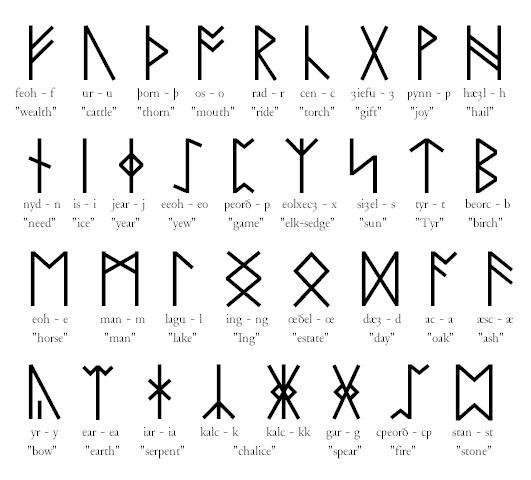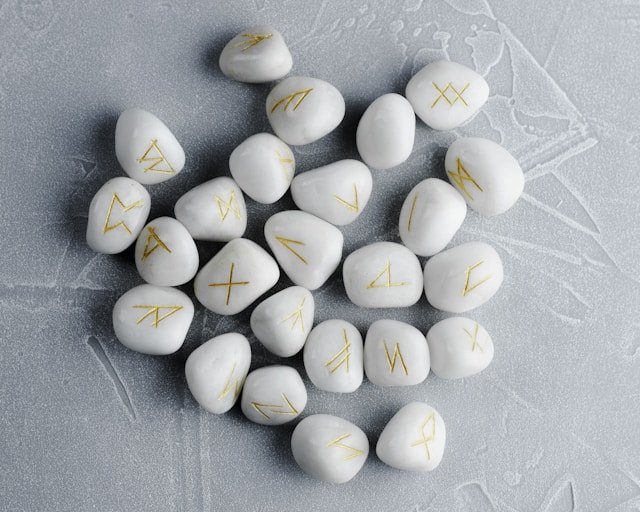The Origins, Use, and Legacy of Runes
Runes are the oldest known writing system in Scandinavia and a defining element of Germanic and Norse heritage. These mysterious symbols, believed to mean “secret knowledge” or “mystery,” were in continuous use in Scandinavia from around the 2nd century AD until well into the late Middle Ages.
Table Of Contents
First Usage and Appearance
The earliest rune inscriptions have been found on weapons, jewelry, tools, and other everyday objects, with discoveries concentrated in Denmark and northern Germany. Some of the oldest known rune-inscribed memorial stones originate from Norway and Sweden.
During the Viking Age, rune stones became widespread, particularly in Denmark and Sweden. The Middle Ages saw runes appear in Scandinavian churches, stave churches, and farm buildings. Archaeological excavations in medieval cities such as Bergen, Trondheim, Oslo, and Tønsberg have unearthed numerous small wooden and bone objects inscribed with runes. In recent years, metal detector searches have revealed rune-etched lead amulets, shedding new light on their continued use.

One of the oldest confirmed runic inscriptions is on a comb from Vimose, Denmark, dated to around 160 AD. Other early finds, including spearheads marked with runes, have been uncovered in Norway, Sweden, Germany, and Ukraine. A notable Norwegian example is the spear blade from Øvre Stabu, inscribed with the word raunijaR (“the one who tries/tests”).
Theories on the Origin of Runes
The exact origins of the runic alphabet remain debated, three plausible theories:
- The Latin Influence Theory – The runes were inspired by the Latin alphabet and developed by a Germanic tribe in southern Europe, possibly influenced by Gaulish writing traditions in northern Italy.
- The Gothic Origin Theory – The runes originated in the Gothic kingdom along the Black Sea around 100-200 AD and later spread to Scandinavia and beyond.
- The Scandinavian Development Theory – The runic alphabet was deliberately designed in southern Scandinavia as a modified version of the Latin script.
Regardless of their origins, runes developed into a unique and versatile writing system used for practical, ceremonial, and even magical purposes.
Runes Across Europe
The Gothic people on the Black Sea coast played a key role in the transmission of runic knowledge. Over time, different Germanic peoples adopted the runic script. Around 260 inscriptions are classified as Proto-Norse and date between 150-700 AD in Scandinavia.
Additionally, over 140 inscriptions from the 5th-8th centuries have been found among West Germanic peoples on the European mainland. Runic script reached England in the 500s and remained in use there until the late 11th century.
The Runic Alphabet: Futhark
The runic alphabet is known as futhark, named after its first six letters. The earliest version, the Elder Futhark, contained 24 runes divided into three groups, or “families.” These letters represented different sounds and evolved over time.

Show Elder Futhark With Explanation
| Rune | Transliteration | Proto-Germanic/Old Norse name | Meaning |
| ᚠ | f | Fehu/Fé | Chattel, Wealth |
| ᚢ | u | ūruz/Úr | Aurochs, Wild ox/windy, cold drizzle/snowfall |
| ᚦ | þ | þurisaz/Þurs | Thurs (Jötunn) or þunraz (the god Thor) |
| ᚨ | a | Ansuz/Óss | God |
| ᚱ | r | Raidō/Reið | Ride, Journey |
| ᚲ | k | Kauną/Kaun | Ulcer |
| ᚷ | g | gebō/Gār | Gift/Spear |
| ᚹ | w | Wunjō | Joy |
| ᚺ ᚻ | h | Hagalaz/Hagall | Hail Shower |
| ᚾ | n | Naudiz/Nauðr | Need |
| ᛁ | i | īsaz/Íss | Ice |
| ᛃ | j | jēra/Ár | year |
| ᛇ | ï (æ) | Eiwaz/ýr | Yew-tree |
| ᛈ | p | Perþ | Unknown meaning |
| ᛉ | z | Algiz/Elgr | Elk/Moose |
| ᛊ ᛋ | s | Sōwilō/Sól | Sun |
| ᛏ | t | Tîwaz/Týr | The god Tiwaz/Týr |
| ᛒ | b | Berkanan/Bjarkan | Birch |
| ᛖ | e | Ehwaz/Jór | Horse |
| ᛗ | m | Mannaz/Maðr | Man |
| ᛚ | l | Laguz/Lögr | Water, Lake |
| ᛜ | ŋ | Ingwaz/Freyr | the god Ingwaz/Freyr |
| ᛞ | d | Dagaz/Dagr | Day |
| ᛟ | o | ōþila/ óðal | Heritage, Estate, Possession |
Runes were typically carved using straight lines, leading to the common belief that they were designed for easy engraving on wood. However, early inscriptions also show curved and rounded shapes, suggesting a more flexible origin.
Unlike modern alphabets, futhark does not follow the order of the Latin, Greek, or Etruscan scripts. Scholars believe that the creators of the runic system were influenced by these classical alphabets but designed a unique order and structure.
Runes and Their Meanings
Runes had names that served as memory aids, much like the Phoenician alphabet. Norse and Old English runic poems preserve some of these names, such as fé (wealth, cattle), úrr (storm), and þurs (giant,Thor). Some rune names may date back to the alphabet’s creation. In certain cases, runes could function as conceptual symbols; for example, the m-rune(ᛗ) might stand as an abbreviation for “man.”
Read more: Norse Mythology: Gods and Goddesses
Evolution of Runic Writing
Runes were not static; they changed significantly over time. Among the Frisians, Angles, and Saxons, the script expanded in the 5th century to form the Anglo-Frisian runes, which included over 30 characters. Meanwhile, Scandinavian runes remained largely unchanged until the 6th century, when language shifts prompted adjustments in runic forms.

By the 7th and 8th centuries, the original 24-character runic alphabet had been simplified into the Younger Futhark, which had only 16 runes. This change may have resulted from linguistic evolution, graphic simplifications, or social factors. Some runes became polyvalent, meaning they could represent multiple sounds, making interpretation more challenging.

With the arrival of the Latin alphabet in the Nordic countries, the runic tradition gradually declined. However, runes continued to be used in some areas, such as Gotland and Iceland, until the 15th century. Interest in runes revived in the 17th century when Scandinavian scholars began documenting ancient inscriptions. By the 18th and 19th centuries, local runic traditions had re-emerged in various regions.
Read more: Who Were the Vikings?
The Lasting Legacy of Runes

Runic inscriptions provide invaluable insights into the language, culture, and history of early Germanic peoples. These ancient symbols reveal details about daily life, beliefs, traditions, and even magical practices. Today, runes continue to fascinate historians, linguists, and enthusiasts, serving as a powerful link to our shared past.
